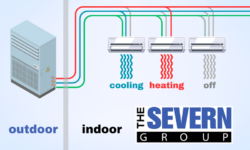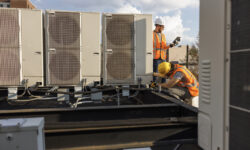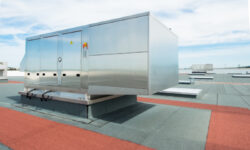In the realm of modern comfort, few inventions rival the impact of air conditioning. From commercial buildings to offices, shopping malls to hospitals, air conditioning systems have become indispensable fixtures, regulating indoor temperatures and fostering environments conducive to productivity, relaxation, and well-being.
Read more →Beyond heating and cooling, the role of plumbing and mechanical services are vital in our homes and commercial spaces; we often think about heating and cooling systems as the primary components of indoor comfort. While they undoubtedly play a crucial role, another essential aspect often goes unnoticed: plumbing and mechanical services.
Read more →Heating, ventilation, and air conditioning (HVAC) systems are essential for maintaining comfort in buildings, whether they are residential, commercial, or industrial. However, they can also be one of the largest energy consumers in these structures. As a result, the quest for more energy-efficient HVAC solutions has led to the development of Variable Refrigerant Flow (VRF) HVAC systems. This blog post will explore how VRF HVAC systems work and how they maximize energy efficiency to reduce operational costs.
Read more →Regular HVAC maintenance can help mitigate the impact of supply chain disruptions. HVAC systems are crucial in maintaining comfortable and healthy indoor environments in various settings such as homes, offices, factories, and commercial buildings. Read on to learn how the Severn Groups regular HVAC maintenance services can help you avoid disruptions.
Read more →An HVAC retrofit refers to upgrading or replacing an existing heating, ventilation, and air conditioning system in a building with newer and more efficient technology. Read on to learn more about evaluating your current HVAC system, determining the needs of your building, and how we can help with installing or upgrading your HVAC system components to best meet those needs.
Read more →When deciding on air zone HVAC systems, the Variable Volume & Temperature (VVT) is an HVAC control system with many advantages. The VVT system overview is a cost effective way for building occupants to maintain & control temperature. Read on to learn how a VVT HVAC system is traditionally constructed and the benefits it can have for your business
Read more →Infrastructure is everywhere, and Data Centers are at the heart of housing computer systems and associated components such as telecommunications and storage systems. Understanding ASHRAE (American Society of Heating, Refrigerating, and Air-Conditioning Engineers) temperature and humidity guidelines for built environments is critical to the success of any data center. Read on to learn about ASHRAE temperature and humidity guidelines.
Read more →The United States Department of Energy has a multitude of different responsibilities, but the organization’s primary responsibilities involve managing the nation’s nuclear infrastructure. As ONE of its many responsibilities, the DOE also creates efficiency standards for HVAC equipment. The newest set of standards, 2023 DOE Efficiency Standards, become effective January 1, 2023. These 2023 DOE Efficiency Standards are based on research conducted by independent entities. The DOE and other organizations provide these researchers with funding so that they can explore ways to optimize energy consumption. DOE standards primarily apply to HVAC equipment manufacturers and installers. However, they can also impact your business in several ways. By voluntarily adhering to these standards, you can save money and improve energy efficiency. Additionally, you may be able to access tax credits by designing a system that complies with 2023 standards. Join us as we examine the latest set of 2023 DOE standards and what they mean for your business.
Read more →Your building’s HVAC system and its energy use represent a significant cost to your business. If your system wastes energy, that’s money down the drain. The International Energy Agency says that AC alone accounts for 20% of electricity use in buildings today and that we need to improve that value in the future. There are many potential causes of energy inefficiency in HVAC systems. You can watch for these signs to determine whether your HVAC system is wasting energy and take action to improve it.
Read more →Hospitals are high-sensitivity spaces that require a delicate balance of factors to maintain the health and comfort of patients. Because hospitals are such high-traffic areas, the most important thing is making sure that every room stays as clean as possible. Hospital HVAC systems are integral to preserving this balance. Every room is connected via the building’s HVAC system. That means every patient potentially shares the same air. Without specifically designed hospital HVAC systems, this would present a massive challenge. How do you keep the air clean for every patient when they all share the same air? The answer comes down to competent system design.
Read more →









